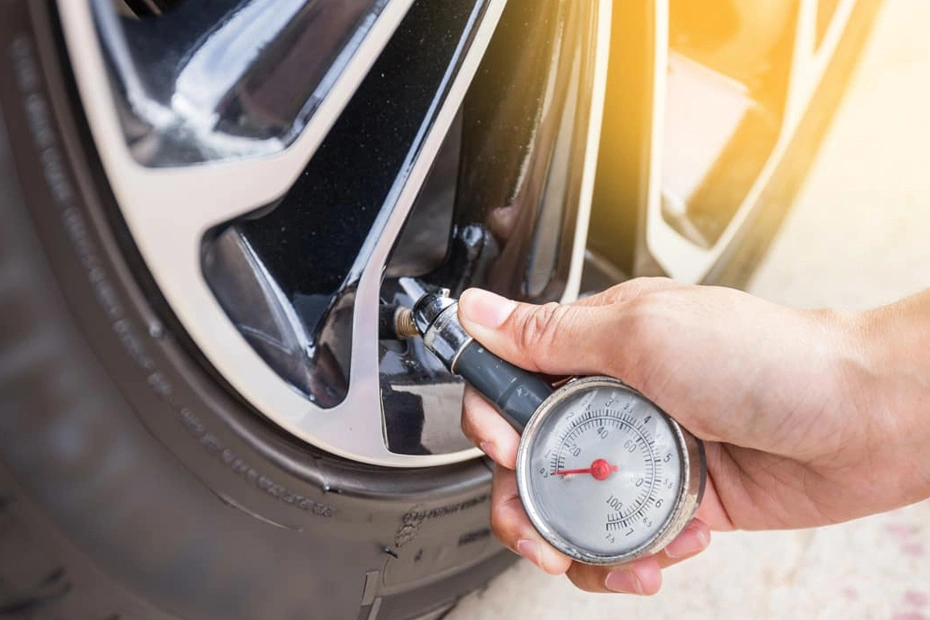Maintaining optimal tyre pressure is often an overlooked yet critical aspect of two-wheeler maintenance. The condition and pressure of a bike’s tyres directly impact safety, control, and overall riding experience. Neglecting this essential task can lead to safety hazards, premature wear, and increased expenses. This article explores the significance of proper tyre pressure for two-wheelers and its role in ensuring a safe and enjoyable ride. Additionally, we also touch on the need for two-wheeler insurance.
Monthly Tyre Checks for Bike Longevity:
Frequent, ideally monthly, tyre checks are essential for extending a bike’s lifespan and minimizing wear. Proper tyre inflation, a fundamental aspect of motorcycle maintenance, reduces the risk of damage and premature replacement costs.
Enhanced Control with Optimal Tyre Pressure:
Think of your bike’s tyres as the foundation for stability and control. Maintaining optimal tyre pressure is paramount for manoeuvrability. Insufficient pressure compromises control, leading to instability, sliding, or difficulty in forward movement, emphasizing the importance of a safe and controlled ride.
Safety Imperative – Preventing Collisions:
Tyres serve as the primary source of traction for motorcycles. Insufficient tyre pressure increases the risk of collisions, compromising control and potentially causing accidents. Prioritizing safety through proper tyre pressure maintenance is crucial for accident prevention.
How To Ensure Proper Tyre Pressure
Here’s a guide to help you keep your bike’s tyres in optimal shape:
Regular Inspection
Initiate the process by visually inspecting the tyres for proper positioning and any visible cuts or damage. This check allows you to identify issues that might lead to rapid deflation, such as small, sharp objects embedded in the tyre.
Ideal Air Pressure Levels
Maintaining the correct air pressure in your bike’s tyres is the key to handling and riding pleasure. Consult your bike’s owner’s manual to determine the recommended air pressure levels. The best time to check tyre pressure is before riding, when the tyres are excellent, as they heat up during motion, altering pressure levels.
Adjusting Air Pressure
After checking the tyres, add compressed air until the recommended pressure levels are reached. Overinflated tyres can be adjusted by releasing excess air. Check the tyres a few hours after riding, and if pressure increases by 10%, it indicates overinflation, necessitating correction.
Tread Wear Check
Alongside tyre pressure, regularly check for tread wear. Bald or significantly worn-down treads compromise traction, especially on wet roads, increasing the risk of slipping. If the tread wears down by an inch or a quarter, it’s time to replace the tyres.
Seeking Professional Assistance
If you encounter persistent issues or suspect a puncture, seek professional assistance. Regularly losing 5–10% of tyre air per week may indicate a puncture, a fractured valve, or a weakened seal around the bead and wheel.
Treating your bike’s tyres as a foundation for stability and control is essential for accident prevention and overall well-being. Regular checks, ideally once a month, and timely adjustments contribute to a trouble-free riding experience. Just as proper tyre maintenance is crucial, having comprehensive bike insurance is equally vital. *
Explore bike insurance options, use the bike insurance calculator, and prioritize safety to enjoy the full benefits of your two-wheeler insurance.
* Standard T&C Apply
Insurance is the subject matter of solicitation. For more details on benefits, exclusions, limitations, terms, and conditions, please read the sales brochure/policy wording carefully before concluding a sale.
